
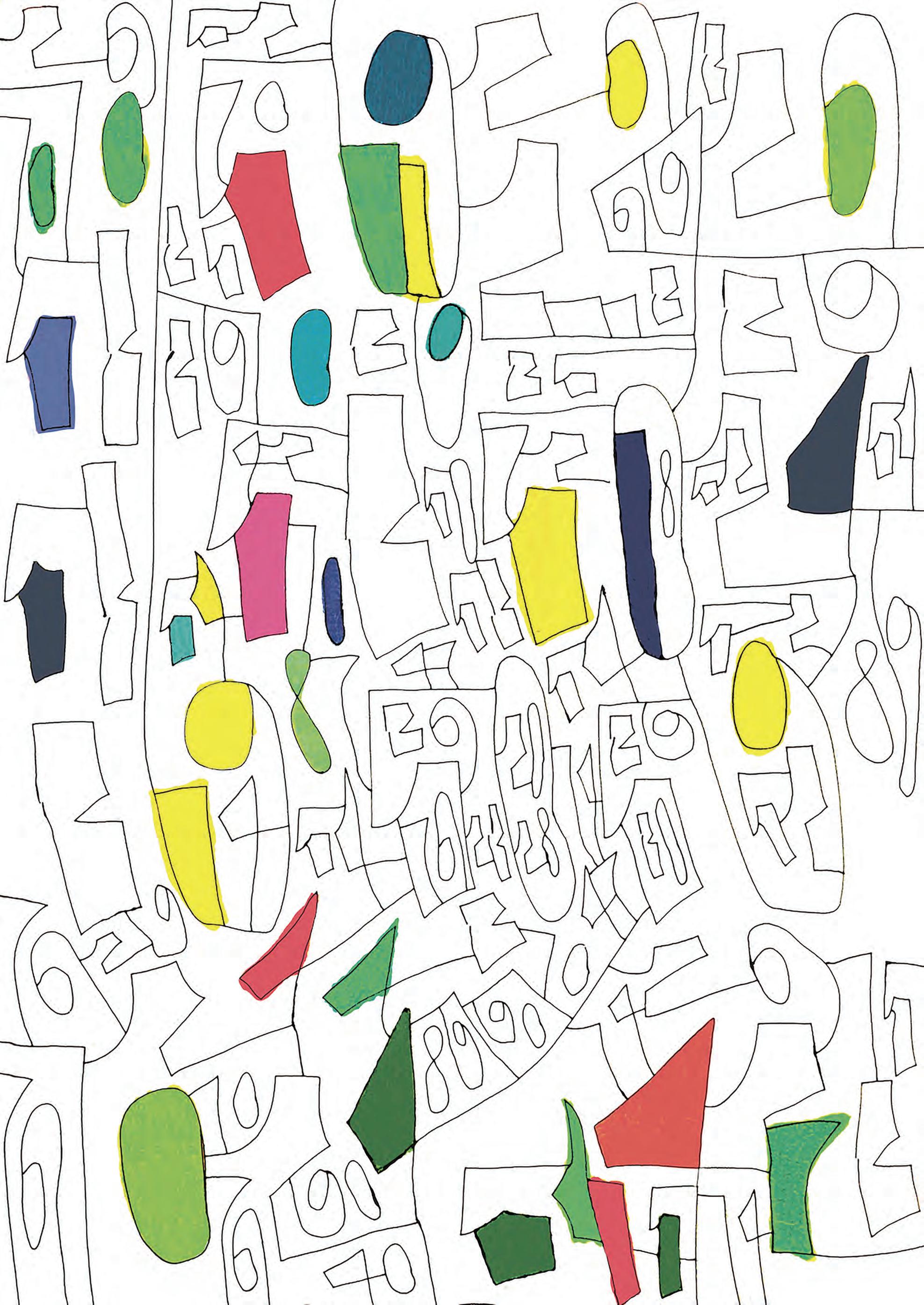










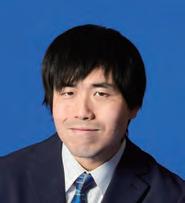






















10.00
11.45 BREAKTHROUGH STORYTELLING CAPTIVATING AUDIENCES ACROSS SCREENS AND STREAMS
DISNEY/DEBUSSY
11.45 CAN WE CHANGE THE WORLD BY CHANGING CONSUMER DEMAND? CANNES LIONS AND WARC/ ROTONDE STAGE, ROTONDE
12.45 ADAPT OR DIE: WHY GIANTS CAN’T DANCE THE BUSINESS OF CREATIVITY/ DEBUSSY
13.15 INSPIRE, REINVENT, GLOBALISE: SECRETS OF JAPANESE FOOD CREATIVITY AJINOMOTO CO., INC./THE FORUM, ROTUNDE
13.45 CHANGE MINDS: SHIFT GLOBAL PERSPECTIVES THROUGH BIGSCREEN STORYTELLING SAWA/DEBUSSY
14.45 NEURODIVERGENT MINDS: THEY DON’T NEED ADVERTISING –ADVERTISING NEEDS THEM HAVAS/LUMIERE
16.30 CHANGING THE GAME: BUILDING BRANDS IN THE AGE OF EXPERIENCES AB INBEV/DEBUSSY


THE 2025 Cannes Lions International Festival of Creativity has received 26,900 submissions, up from 26,753 in 2024. At a time of extreme economic uncertainty, the increase represents a huge vote of confidence in the creative industries. Every piece of work entered will now compete for a coveted Lion trophy, with winners setting the global benchmark for excellence in creativity and effectiveness for the year ahead.
Simon Cook, CEO, LIONS, said: “We know world-class creativity can come from anywhere. For business leaders seeking growth opportunities, the global benchmark provides a unique insight into creativity’s power as a catalyst for transformation and growth. With submissions from 96 markets — and significant regional
growth from LatAm — we look forward to seeing the breadth of ground-breaking ideas.”
In terms of category-by-category trends, the Design Lions, which underwent significant updates this year to reflect the strategic and behavioural impact of design, experienced a 17% increase in submissions, underscoring the growing role of design as a tool for brand and societal transformation. Creative B2B also saw growth, with entries up 13%, while the Entertainment Lions for Sport rose by 15%, reflecting an increasing emphasis on creativity within performance-driven and fan-led sectors. The Strategy Track, encompassing the Creative Strategy and Creative Effectiveness Lions, has also seen a notable 10% year on year increase, marking a fifth consecutive year of
At Lions, everything we do is grounded in one clear belief: creativity is a growth driver — for business, for people and for society. Our entire Festival is designed to support that mission — and this year, we have expanded our focus to showcase the breadth of business — driving initiatives and opportunities that creativity can unleash. This perspective runs through every touchpoint of the Lions experience — from our Awards and learning programmes to our content and broader community initiatives. The goal is simple: to equip our community with the tools, connections and inspiration they need to fuel meaningful growth through creativity, and to help our audience connect creative marketing with the board room growth agenda. TURN TO PAGE 9



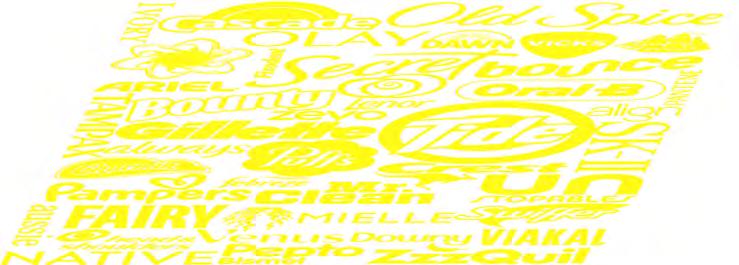





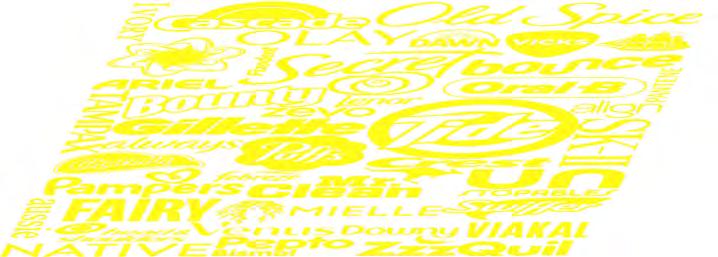

‘We’re seeing record growth in categories that demand measurable impact’ intersectionality intersectionality’
growth. Meanwhile, Glass: The Lion for Change saw an impressive 53% increase in submissions, driven by a broader, more intersectional approach to work that tackles systemic issues and drives real-world impact.
Marian Brannelly, global director of awards, LIONS, said: “The submissions this year reveal a shift in how creativity is being harnessed for meaningful change for both business and society. We’re seeing record growth in categories that demand measurable impact, whether that’s through design thinking that transforms user experiences or strategic approaches that deliver tangible business outcomes.”
Signalling a shift in creative ownership, submissions from independent agencies have grown 18% year on year, showing that innovation and big thinking aren’t limited by scale. “Strong engagement with creator-focused submissions, and the growth of independent agency participation, represent an industry embracing new models of impact, innovation and transformation,” Brannelly said. Among innovations at the Awards this year, the Social & Influencer Lions have been renamed the Social & Creator Lions to recognise creators’ increasingly important role in the landscape. New categories added to the Social & Creator Lions focus on creators and the innovative work they are producing for brands. 18% of all entries were submitted into sub-categories that focus specifically on creator-led content. Aligning with this, LIONS Creators — the bespoke learning experience for the creator economy — will return to the Festival for a second year giving creators a place to come together to learn how to build their businesses in a sustainable and effective way.
There are also changes for Glass: The Lion for Change, which celebrates 10 years since its launch. The Glass Lion
was introduced to champion work that uses creativity to drive a shift towards more positive, progressive and gender-aware communication, and Brannelly said it was time to evolve it. “Gender representation remains essential and, following consultation and research, there is now a need to evolve the Lion to recognise the importance of intersectionality, from disability and race to sexuality and social inequity. Expanding the scope allows us to celebrate ideas that promote more equitable representation for a broader range of communities and also reflect the importance of embedding authentic inclusivity throughout the creative process.”
One of the factors that makes Cannes Lions such a durable landmark in the creative calendar is that the work is judged by a remarkable array of industry leaders from around the world. Among the 2025 Jury Presidents, one highlight is the participation of Ali Ali, co-founder and film director, Good People Films. Ali has agreed to be the Film Craft Lions Jury President, representing Egypt on the line-up for the first time.
Other Jury Presidents come from North America, Europe, LatAm, the Middle East, Asia and India. LIONS’ Cook said he is “excited to welcome a diverse and forward-thinking group of leaders who understand the transformative power of creative excellence to drive business growth and impact. All experts in their field, their incredible talent, combined with the commitment and leadership they bring to their roles, ensures the highest levels of integrity and rigor in the judging process.”
Of note, the 2025 Juries have a strong line-up of female Presidents, with Kate Stanners, chairwoman and global chief creative officer, Saatchi & Saatchi, Global taking on the role for Film Lions. Among other female

Presidents are Tara Ford, chief creative officer, Droga5 London (Brand Experience & Activation); Wendy Walker, vice-president marketing ASEAN, Salesforce (Creative B2B) and Jane Lin-Baden, CEO APAC, member of the global management committee, Publicis Groupe (Creative Business Transformation). KR Liu, global head of disability innovation, Google, will have a pivotal role to play as Jury President of Glass; while Beth Keamy, chief digital officer at TBWA\Media Arts Lab, Global, will serve as Jury President for the newly-configured Social & Creator Lions.
The 2025 Juries are just as multi-talented and diverse as their Presidents. Key developments include increased representation from Africa, Asia and the Middle East, with Ivory Coast and Kazakhstan represented on Juries for the first time. Brannelly said the 2025 Juries comprise “some of the most respected talent from across the global industry. This year, we’re welcoming Jury members from 52 markets. We’re delighted to bring such a breadth of voices and perspectives into the Jury rooms.”
A highlight every year is the Dan Wieden Titanium Lions, honouring work that breaks new ground, challenges industry norms and redefines the creative landscape. Among the industry legends joining the Jury is President Judy John, global chief creative officer, Edelman, Global. She said she is “deeply honoured to lead the Dan Wieden Titanium Lions, as it celebrates the boldest and most transformative ideas shaping the future of our industry and the world. As we navigate an era of unprecedented challenges and change, the Titanium Lions represent the power of creativity to challenge the status quo, spark progress and inspire what’s possible.”
LIONS CEO Cook added that the Dan Wieden Titanium Lions rewards work that “shifts perspectives, challenges the status quo, and, as Dan Wieden put it, ‘makes the industry stop in its tracks and reconsider the way forward’.”
As well as celebrating the best creative work in the world, Cannes

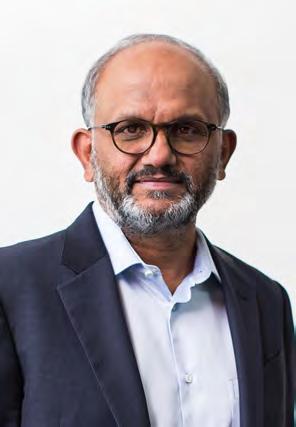
Lions is also an opportunity to shine a spotlight on the remarkable achievements of brands, individuals and countries connected with the global creative community.
This year, for example, David Lubars, former chief creative officer of BBDO Worldwide, will be honoured with the Festival’s lifetime achievement award, the Lion of St Mark. With a career spanning 40 years, Lubars has won more than 600 Lions and, under his creative leadership, has helped BBDO achieve unprecedented success, including being named Network of the Year at Cannes Lions a record-setting seven times.
Cook said: “David has been a true force for creativity. We have welcomed him onto our Juries seven times — five as President — and his ground-breaking work for BMW served as a catalyst for the creation of the Titanium Lions.”
About being named the Lion of St Mark, Lubars said: “Great brands and companies are brilliant, high-quality, and deliver on their promises. They possess a certain kind of magic, but one not always expressed. The goal for me was to surface that magic, mine it, turn it into something tangible a client could grab onto and run with around the world. You do that by injecting effervescent creative air into the culture rather than mediocre media pollution. You surprise people, you delight people; they fall in love.”
In a similar vein, Adobe chair and CEO Shantanu Narayen has been named as Cannes Lions’ Creative Champion of the Year 2025. A new Award, this prestigious accolade is given to individuals and organisations in recognition of their contribution to providing creative people with the tools to truly express themselves.
Philip Thomas, chair, LIONS, said: “While human imagination is almost boundless, turning visionary ideas into reality depends on partners who provide innovative tools, cutting-edge technologies and bold collaborations. This new honour is dedicated to individuals or organisations that have profoundly understood and supported the needs of creative people, driving
the creative agenda across industries and the globe.”
Under Narayen’s leadership, Adobe has democratised creativity, enabling creators to advance their craft and accelerate their success through technology. Narayen said: “This award is a celebration of the incredible team at Adobe whose passion, ingenuity and dedication have enabled us to deliver ground-breaking technology that expands opportunities for more people everywhere to bring their creativity to life.”
Also during Cannes Lions 2025, Apple is to receive the Creative Marketer of the Year Award. Given annually since 1992, this prestigious accolade is presented to a marketer that has amassed a body of iconic, Lion-winning work over a sustained period of time. This is the second time Apple has been honoured with this Award.
Last year Apple took home Lions for a range of brands, products and services in the B2B and B2C spaces, and from across a breadth of eight disciplines. Cook said: “Apple has fostered a culture that prioritises creativity and innovation, and that shows up in its deep understanding of meaningful marketing. As part of its culture, it’s clear that Apple’s leadership encourages the kind of thinking necessary to create marketing content that connects with people in a uniquely emotional way.”
Tor Myhren, vice-president, marketing communications, Apple, will deliver a keynote and collect the award. He said: “We are incredibly grateful for this honour, which highlights the passion and creativity of an extraordinary team. Apple has always existed at the intersection of liberal arts and technology, and we work hard to channel our creativity into content that will inspire our users to unlock their own.”
For the first time ever, there is also an award for Creative Country of the Year — which this year goes to Brazil. Brazilian creativity regularly ranks among the very best in the world, shaping the industry and capturing imaginations globally. Last year, Brazil secured 40 Bronze, 26 Silver, 10

Gold and two Grands Prix awards. Cannes Lions is not just about creativity, but positivity and activism. An award that reflects this is the Cannes LionHeart accolade, which is given to a person who has harnessed their position to make a significant and positive difference to the world. This year the award goes to musician, author and activist Sonita Alizadeh, co-founder of Arezo and The Dreams Book, a secret school for Afghan girls deprived of education under Taliban rule. Born under Taliban rule, Alizadeh faced the threat of child marriage twice before finding her voice through music. Her rap video Daughters for Sale gained international recognition, amplifying her fight against child marriage. Her story was documented in the film Sonita, which tells the story of Afghan refugee girls in Iran.
Through her work as the first professional Afghan rapper, a human rights activist and an author, Alizadeh has become a global voice for women’s rights. “Sonita’s journey is an inspirational story of resilience and courage,” Thomas said. “She has used her voice and platform to challenge oppression and inspire the next generation.”
Alizadeh added: “Being awarded the Cannes LionHeart is a powerful affirmation that using my voice to fight for girls’ rights and freedom matters. This Award reflects the journey from silence to sound, from being sold to standing on the world stage. It reminds me that no dream is too wild when it’s rooted in truth, courage and purpose.”
Other new initiatives at Cannes Lions 2025 include Country Pavilions — launched to drive greater global representation of countries. This global village will provide countries with the opportunity to showcase local creativity on the global stage, promote creative economies and serve as a hub for learning sessions and networking.
Thea Skelton, LIONS vice-president, festivals, said: “The global creative economy is estimated at $985bn and could represent 10% of global GDP before 2030, according to think tank G20 Insights. With this pace and scale we believe countries have an opportunity to supercharge their creative economy by showcasing their capabilities at Cannes Lions in front of some of the most influential minds in the industry.”
Another focal point in 2025 is


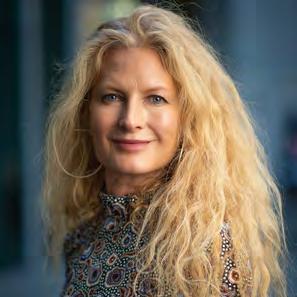



sport. With a $100bn global ad spend market size and eight-10% of growth year-on-year, sport is a big — and growing — business. To reflect this, Stagwell has been named as Official Lions Sport Partner for Cannes Lions 2025. Together with Stagwell, Cannes Lions is bringing more sport to the Festival than ever before and giving it a dedicated home at the Stagwell’s Sport Beach. Now in its third season, Sport Beach hosts news-making conversations, workshops, open play and more across four days, featuring the world’s leading athletes including Travis Kelce, Megan Rapinoe, Carmelo Anthony and Eric Cantona. While much of Cannes Lions is focused on the world’s best creative work and insights from visionary speakers, there is also an important learning, training and mentoring dimension to the event — chiefly expressed through the Festival’s academy programme. Cook said: “The Academies are a cornerstone of the Festival, offering a world-class
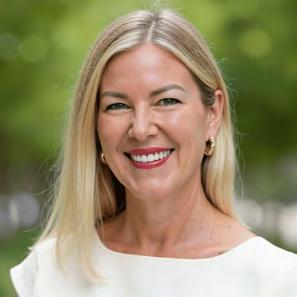
education and training experience tailored to our global community. Through an exceptional network of speakers from across the media, marketing and creative industries, these programmes empower attendees with the tools and skills to excel in their careers and produce outstanding work. Our deans play a pivotal role in setting the vision and standards for these transformative learning experiences.”
This year, two new deans have been named to lead the Creative and Roger Hatchuel Student Academies at Cannes Lions 2025. Alan Kelly will be Dean for the Creative Academy. As former chief creative officer of Droga5 in Dublin, as well as creative director at TBWA, Kelly brings a wealth of creative experience to his role as Dean. Meanwhile, Lissy Calienes will be leading the Roger Hatchuel Student Academy as Dean. As associate instructional professor and senior lecturer in the College of Journalism and Communications at the University of Florida, she brings vast educational experience. Alongside the two new deans Douwe Bergsma will rejoin the Brand Marketing Academy as Dean in 2025 following a leave of absence last year.
In a separate initiative designed to create pathways for young talent, the Festival has also doubled funding to provide €2m worth of complimentary passes to underrepresented talent and underserved communities. Frank Starling, chief DEI officer, LIONS, said the increased investment is “crucial to continue to drive progress for Cannes Lions and the industry. With the Festival being the destination for everyone in the business of creativity, we recognise the importance of creating equitable access to it, and this is why we’re prioritising increased representation from the Global South to support a greater range of voices and perspectives from the region at the Festival.”
‘To honour what’s come before. To pioneer positive change. And to celebrate marketing that matters’
economies at a national level. Our commitment to Equity, Representation and Accessibility (ERA) remains central to our mission. In 2025, we are investing €2m in complimentary Festival passes through the ERA Programme, with a focus on the Global South, opening doors for individuals from 28 countries — representing society rather than reflecting the industry. This programme is about much more than attendance — it’s about connection, celebration and the visibility of groundbreaking creative talent from communities that have historically been underrepresented.
This year, we’re introducing new Country Pavilions to Cannes Lions, a major step toward enhancing global representation across the Festival. We know creativity is one of the most powerful levers for economic development. By bringing together countries, governments, policymakers, associations and brands in a shared space, we’re creating a dynamic platform where capabilities are showcased, ideas are exchanged and new relationships are formed — to help unlock new creative
We’re also proud to unveil two new recognitions for 2025. The Creative Country of the Year honour will debut with Brazil, celebrating its extraordinary contribution to the global creative landscape. Alongside this, the Creative Champion of the Year Award will spotlight individuals whose work is actively moving the industry forward — champions
of meaningful creative progress. The 72nd Festival also marks a special milestone: the 10th anniversary of Glass: The Lion for Change. As it enters a new decade, the Award will evolve with refreshed updates to better reflect its mission of challenging stereotypes, promoting equity and driving positive change. It’s a moment to reflect on how far we’ve come, and how much further we need to go. In June, we come together not just to celebrate the winning work, but to explore the conditions for success. The 2025 content programme will be laser-focused on this — unpacking what it really takes to drive growth through creativity in an evolving and fast-changing world. We look forward to welcoming you to Cannes Lions 2025. To honour what’s come before. To pioneer positive change. And to celebrate the talent behind creative marketing that matters.
Thank you for being here. Make it count. Make history.
Andrey Tyukavkin LEPUB

Monday, June 16 at 4 pm
Palais, Terrace Stage
Natasha Maharaj & Bruno Bertelli
HEINEKEN DESPERADOS / LEPUB

Tuesday, June 17 at 2:30 pm
Palais, Creator’s Rooftop
INSPIRATION BEGINS BEFORE BRAINSTORM
Before any sketch, slide, or strategy, there is stillness
In Romanian creativity, inspiration comes not from pressure, but from presence — a pause, a breath, a beam of light across an old stone wall.
We begin not with the answer, but with wonder.

ANDREY Tyukavkin, chief invention officer and global executive creative director at Publicis-owned creative agency LePub, is at the Cannes Lions Festival to discuss how neurodiversity can help unlock more and better creative ideas.
Speaking to Lions Daily News ahead of today’s session, Chronic Creative Disorder: Imagination as a Neurological Condition, Tyukavkin said he aims to “reframe what we often call ‘improper wiring’ — the neurodivergent brain — not as a flaw, but as a powerful creative engine. My mind sometimes panics, spirals, switches channels mid-thought. It doesn’t always think straight. But that unpredictability is often where the magic happens and it’s important to embrace this as a creative.”
Aside from the talk, Tyukavkin said the Cannes Lions is also “full of opportunities to connect and collaborate”. He added: “That mix of talent, energy and vision in one place is always electric. We’ll be making two presentations in the Innovation category and cheering on our LePub colleagues for their Titanium entry, which we’re incredibly proud of.”
A core element of LePub’s mantra is that brands that embed themselves in culture thrive. An example, Tyukavkin said, is Heineken: “Year after year, Heineken enters new cultural spaces. In 2022, we took a bold stand to make fun of the metaverse [‘The Virtual Heineken Silver’], which we knew to be a fad, and it helped make us culturally relevant among online population and gamers. The next year, we addressed social life in games [‘The Gaming Fridge’]. In 2024 and 2025, we found lateral ways to solve issues football fans are facing — again, often using a combination of insight and technology [‘Trust Bars’ in Korea] or used tech to communicate how
we could use tech less for a better social life [‘The Boring Phone’, ‘The Flipper’]. If you look at key brand metrics like meaningfulness and relevance, you will see it grows with each activation.”
Tech is a crucial dimension of LePub’s work, though Tyukavkin is quick to stress that he is not interested in tech for tech’s sake, but in how tech and culture collide: “We try to get inspired by aspects of technology to challenge cultural norms and ride — or even inspire — a countermovement, like we did with releasing a dumbphone [‘The Boring Phone’ campaign]. Dumbphones became extremely popular again last year as a symbol of digital mindfulness. By sensing this trend from the tech perspective and creating a tech piece, we were among the brave brands that stand with consumers in their battle with digital overload. All without being preachy or unrealistic.”
With this in mind, the Cannes Lions is also a great opportunity for Tyukavkin to talk about LeGarage, a tech and innovation-driven collective launched earlier this year. In a landscape where efficiency often stifles creativity, LeGarage champions innovation as the key to exponential growth. More than a creative department, LeGarage is a hub for tech enthusiasts, innovators and culture-driven thinkers — a space where technology is applied to challenge the status quo. Asked to specify which aspects of the status quo creatives should be challenging, Tyukavkin replied: “the overindulgence with AI and the fact that machines are becoming a part of social life, removing meaningfulness from communications.”
He also takes issue with “the ever-lasting race of gadgets — the craponomics, when tech products are predestined to be broken or be-

come obsolete soon after purchase, so you keep buying new versions. The latter we are tackling with Philips. LeGarage exists to disrupt this loop, not by rejecting tech, but by demanding more from it.”
By operating at the nexus of creativity, culture and tech, Tyuka -
vkin said LePub and LeGarage have developed a unique edge. “While our roots are in creative agency culture, the way we operate today often mirrors that of a tech company. We invent, prototype, build and scale in ways that go far beyond advertising.”


Did you know that 70% of consumers are open to adopting new rituals? And 39% feel more positively towards brands that become part of their rituals?

script on its head. The consumer is in charge of creating their own personal rituals and deciding whether and how to incorporate brands – not the other way around.
Our white paper serves as a guide for brands looking to tap into the power of rituals. It offers insights, strategies, and practical examples to help brands authentically engage with their consumers in ways that matter.
Imagine a world where the everyday rituals that guide our lives – from the simple act of making coffee each morning to the more elaborate traditions of celebration – are not just personal quirks but untapped opportunities.

MSQ is a next-generation creative, technology and media company creating brand momentum for clients. It’s one of the world’s fastest growing marketing groups, offering flexibility, choice and transparency. Find out more at msqpartners.com

CLAUDIA Romo Edelman, founder and CEO of We Are All Human and The Hispanic Star and host of A La Latina podcast, is at Cannes Lions to introduce the latest edition of the influential Hispanic Sentiment Study. Previously published on three occasions, Romo said the updated 2025 version explores what happens “when your fastest-growing customer segment feels abandoned, not by choice but design”.
Created in collaboration with Nielsen, TelevisaUnivision, iHeartMedia and Canela Media, Romo Edelman said: “There is a clear message — that the sentiment of US Latinos is really low. There is a widening gap between their self-awareness of influence and power and how that is reflected by brands and media.”
This self-awareness is the big change since the study began in 2018, she said: “The vast majority of Latinos (77%) are now aware of
their contribution, their purchasing power, their political power. And they know that the people in power are not seeing it in the same way or investing accordingly. There is a corporate paralysis due to economic uncertainty and the current anti-DEI pressures that is making companies hesitate about investment in multicultural marketing.”
The result, Edelman said, is a collapse in Latino faith in brands and institutions. “Latinos are ready to make purchasing decisions based on ‘Who sees me or who doesn’t’, ‘Who invests in my community’. That’s dangerous for brands when you consider that the US’ 62 million Latinos represents a $4.5tr economy.”
She added that brands and agencies need to realise that talking to Latinos is “smart marketing. This is an untapped, outperforming segment with high expectation and spending power.” At the same time, she

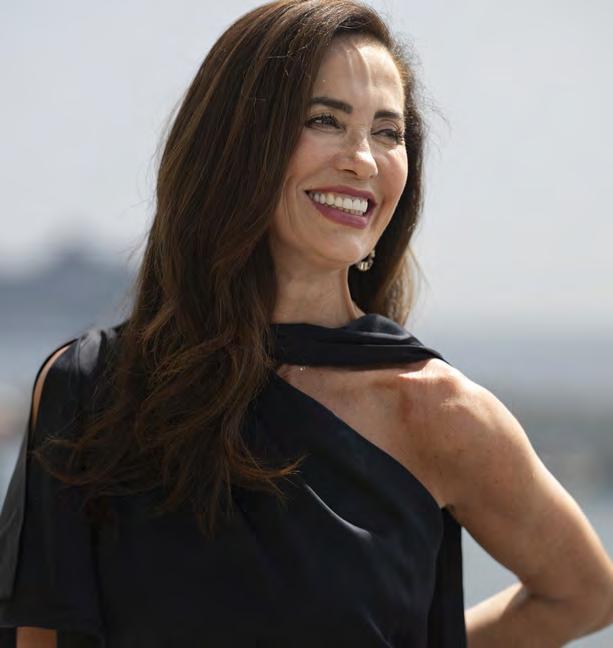
stressed that connecting with Latinos is “simple. Talk to us in language, in culture, invest in our communities. There is a gigantic opportunity here so brands should be taking big bets.”
Edelman is also delivering a talk today, Winning Hearts, Mobilising Minds: The Strategy behind Lasting, Purpose-Driven Campaigns, on the
Terrace Stage, 16.15. “The core theme is sustainability and how you build a global movement that changes minds and drives action. In some ways, there is an overlap with the Hispanic Study — both are situations where consumers want to feel purpose. Their loyalty must be earned through authenticity, trust, and representation.”
IT IS the third year for WARC’s Creative Impact track at the Cannes Lions, with chief content officer David Tiltman determined to “answer really big questions about how creativity works in the modern media landscape”.
“It does feel like there’s a lot of change in the air, and we want to lean in to that change. Yes, we want to reassure people that creativity still matters, but also to really challenge how we see its role going ahead into the future,”
Tiltman told Lions Daily News.
His How to Give Your Brand the X Factor session, this afternoon, will tackle what he sees as a “pervading view in the business world” that brand-building is fluffy, unaccountable and old-fashioned in comparison to the clicks-and-sales metrics driving performance marketing.
“We will look at how to tell a better story to your CFO about the role that brand investment in advertising can play,” he said.
“We will also challenge some of
the ways marketing organisations are being structured now, because it creates siloes [of brand and performance marketing teams]. Siloes actually undermine the impact of creativity.”
Tiltman believes this message is particularly relevant at a time when budgets remain under pressure due to the wider economic landscape.
“The classic response to a period of economic instability is to cut back on anything that is seen as a longer-term investment, and maintain the thing you think is getting sales through the door right now,” Tiltman said.
He is also hoping to see deeper engagement with sustainability topics at this year’s Festival.
“I’d like to see a little bit more talk about how we resolve this tension between marketing, which is all about growth and consumption, and sustainability, which in some people’s view is about less growth and less consumption,” he said.

THE SHORTLIST for Glass: The Lion for Change has been released. Out of a record-breaking total of 251 entries — up 53% on last year — 28 have advanced to the next stage. The big increase in entries follows an evolution of the category, which now has a broader approach to work that tackles systemic issues and drives real-world impact.
Among the shortlisted work is a campaign from the Cannes Lions Creative Marketer Of The Year Apple (Airpods Pro 2 Hearing Aid Feature). Dove, Nike and L’Oreal are also in the running this year with high-profile campaigns. L’Oreal’s shortlisted entry ‘The
Final Copy Of Ilon Specht’ was the subject of a fascinating Cannes Lions session in 2024, which explored Specht’s pivotal role in creating the ‘Worth It’ slogan. Shortlisted campaigns have come from numerous territories including the US, UK, Australia, Brazil, France and Japan. Winners of Lions and the Grand Prix will be revealed at an awards event on Friday evening in the Palais de Festivals.
KR Liu, global head of product innovation & marketing partnerships for platforms and devices, Google — an advocate for inclusion and innovation — is Glass Jury President this year. Diagnosed with

severe hearing loss at the age of three, she has said that “one of the greatest untapped resources for innovation, creativity and scale is the disability community”. Reviewing this year’s Glass Lion entries, she has been “paying attention to more than just the message — I’m looking at what’s underneath. Who the campaign is centred on. What does it challenge? And whether the work was built to last.”
Her Jury includes experts from Ghana, India and Lebanon, as well as the US, UK, Japan, Brazil and Australia.
Last year, Unilever-owned skincare brand Vaseline won the Glass Grand Prix for a campaign developed by Ogilvy Singapore. The companies worked with the transgender community in Thailand to make skincare for transgender women: Transition Body Lotion.
ENDS WHEN IT ARRIVES IN CANNES
If one person or 100 people read your printed copy of the Lions Daily News, post-delivery emissions remain at zero. That is not the case if you read it on a phone or tablet
The print and paper industry is one of the lowest industrial greenhouse gas emitters in Europe, accounting for just 0.8% of emissions (European Environment Agency)
The Lions Daily News is printed on responsibly sourced, 100% recyclable paper. If you don’t keep hold of your copy, please make sure it can be recycled
Our printing partner, Creamania, holds the ‘gold standard’ in environmental certification,
being both ISO9001 (1999) and ISO14001 (2012) accredited
Creamania also holds the French Imprim’Vert certificate, which covers responsible disposal or recycling of waste materials and the non-use of toxic chemicals
All inks used are certified to be of vegetable origin
No chemicals are used in the processing of the printing plates, only water – and after use they are recycled to be used in other industries
We will continue in our efforts to minimise the impact of your Lions Daily News on the environment
PUBLISHER, LIONS DAILY NEWS BOUTIQUE MEDIA INTERNATIONAL LTD.


For the first time in its history, the Cannes Lions International Festival of Creativity is presenting the Creative Country of the Year award. And the winner is: Brazil. By
Marcel Serrano Gudiño, editor PRODU
THIS RECOGNITION doesn’t come as a surprise — it rather confirms what the advertising industry already knew: Brazil doesn’t just make campaigns, it creates culture.
Six industry leaders share their views on this milestone and what makes Brazilian creativity so unique in a country where, to the rhythm of samba, not only is great football played, but vibrant, passionate ideas are born.
‘It’s an honour, yes, but not a surprise’. That’s how Guto Monteiro, executive creative director at VML, puts it. Since Brazil won its first Lions in 1971, the country has demonstrated a unique ability to transform passion, ingenuity and resilience into globally recognised creativity. At the 2024 Festival, the country matched its 2023 record by winning 92 awards, including two Grands Prix, 14 Gold Lions, 31 Silver and 45 Bronze.
But Brazilian advertising creativity is not a fleeting trend or a stroke of luck.
As Pedro Araújo, executive creative director at Gut São Paulo, aptly says: “We’ve always been here, we’ve always been relevant.”
A key figure in the history of advertising will also be specially honoured this year: the legendary Washington Olivetto, considered the Godfather of Brazilian creativity. “This recognition is a collective applause for our history and an invitation for the future,” Angerson Vieira, co-CCO at Africa Creative, says, highlighting the value of those who paved the way.
Over the years, Brazilian talent has distinguished itself for its ability to turn obstacles into solutions. Marco Giannelli (Pernil), chief creative officer at AlmapBBDO, explained that they became accustomed to doing more with less, “facing budget and



June 16–19, 2025
61 Boulevard de la Croisette Cannes, France
Learn more wsj.com/jhcannes25

Join us June 16–19 at Journal House, your global hub for innovative ideas, networking and R&R during the 2025 Cannes Lions International Festival of Creativity.
Our home away from home—and yours—where the world’s leading creatives, thought leaders and executives will gather to discuss how the convergence of storytelling, data and purpose can drive lasting impact and growth.

June 16–19, 2025
61 Boulevard de la Croisette Cannes, France
Learn more wsj.com/jhcannes25

Join us June 16–19 at Journal House, your global hub for innovative ideas, networking and R&R during the 2025 Cannes Lions International Festival of Creativity.
Our home away from home—and yours—where the world’s leading creatives, thought leaders and executives will gather to discuss how the convergence of storytelling, data and purpose can drive lasting impact and growth.
production constraints, and working with local brands that were mostly unknown abroad”. Today, globalisation and a higher level of production allow them to be more competitive and admired in other markets.
Erh Ray, founder, CEO and CCO at BETC Havas, compares Brazilian creativity to a footballer’s dribble, “born from improvisation, from a keen sense of life, from the talent to turn obstacles into beauty”.
But it’s not just about technique or ingenuity. Passion, emotion and resilience are essential to their creative DNA. “Nothing can stop a Brazilian from bringing an idea to life,” says Icaro Doria, CCO and co-president at DM9, capturing the inner drive that keeps them creating.
In a time when creativity often seems to be being homogenised by automation, Brazilian creative minds stand out for their humour and local sensitivity. That authenticity offers a lesson to an industry looking to emotionally connect with audiences. What began as solving local briefs with ingenuity has become a language that transcends borders — and a mark of quality. “We have the ability to forge solutions from social and economic adversity. Brazilians thrive in chaos, using it as fuel for creativity,”
Gut’s Araújo says.
That talent doesn’t stay at home.
The significant number of Brazilian creatives excelling in the best agencies and networks around the world is undeniable. “And as long as AI can’t replace what is genuinely human, that remains our greatest advantage,”
AlmapBBDO’s Giannelli says.
Another further distinguishing element of Brazil’s creative industry is its transformative power. In recent years, its work has stood out both locally and internationally — not just for being clever and aesthetically impeccable, but also for its cultural relevance and meaningful impact.
Whether through humour, emotion, or protest, campaigns born in Brazil seem to have a clear intent: to spark conversation, represent marginalised voices, or inspire change.
“In Brazil, the best ideas don’t just solve a brief — they invite us to think, to feel, to change something,” Araújo says. This purpose-driven creativity proves that the best ideas don’t just sell products—they also challenge, move, and most of all, connect.
Being named Creative Country of the Year is not an endpoint. It might just be the beginning of what’s to come.
‘Nothing can stop a Brazilian from bringing an idea to life’ Icaro Doria
With a projected growth in ad investment between 5.2% and 11.7%, and a significant presence of 33 jurors at Cannes Lions 2025, Brazil is cementing its place as a key player in the industry’s evolution.
Its formula — combining diversity, cultural sensitivity, and a smart embrace of new technologies — is a real alternative for a creative industry aiming for a more meaningful, inclusive and human approach.
Today, brands are not just looking to sell, but to connect with purpose and authenticity. And in that, Brazil has a lot to teach. As Africa Creative’s Vieira says: “While others are still programming emotions, we keep creating from the soul — offering the world ideas with the power to move.”
And perhaps that is the biggest differentiator of Brazilian creativity: an energy that reinvents itself with every change, every crisis, every urgent conversation. “We have everything it takes to lead the industry globally […] If we do it right, Brazil will remain the guest of honour at Cannes and many other festivals,” VML’s Monteiro says. All signs point to one truth: Brazil is not just living its best creative moment. It is writing the future of creativity.


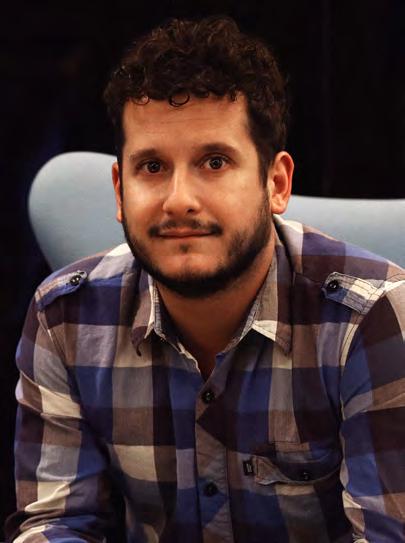



Creativity is under mounting pressure in Latin America, where global dynamics are forcing the advertising sector to adapt or die.
By Cristian Camilo Vergara, editor of Latam PRODU
MKTG

AMID new regulations, platform bans, and political negotiations crossing borders, the shifting global trade map is beginning to leave its mark on the Latin American advertising industry. While the effects aren’t always immediate, growing geopolitical uncertainty is reshaping how brands invest — and the kind of ideas likely to be recognised at festivals like Cannes Lions. To better understand this dynamic, PRODU gathered insights from leaders across agencies, consultancies and ad tech firms in the region. Their perspectives vary, but one thing is clear: adaptation is no longer optional — it’s the new default.
A new reality for brands
Alberto Pardo, CEO of Adsmovil, offers a strategic take on the situation: “This isn’t a major issue yet. It’s part of a broader US strategy to apply trade pressure. But if it escalates, we could see brands abandoning global aspirations in favour of operating within clusters of countries that offer fairer trade terms.” As an example, he points
to TikTok — “its future now hinges on political deals and potential bans”.
Mike Arciniega, founder and chief creative officer at Archer Troy, complements this view from a creative standpoint. He believes global tension is already reshaping client briefs and expectations. “Our clients are demanding cross-media, memorable, personalised, collaborative experiences with tech integration. What happens in the world quickly becomes a trend at Cannes. The best ideas we see there will undoubtedly reflect the pressing issues that concern humanity today,” he says.
From the media side, Héctor Bula, chief media officer at Publicis Media Colombia, sees this as a turning point for the region: “Now more than ever, Latin American brands must lead with authenticity, purpose and flawless execution. The brands that act boldly will shape the future — and stand out at Cannes.”
Joining that perspective, Santiago Busconi, chief strategy officer at Initiative LATAM, stresses that the shift is not


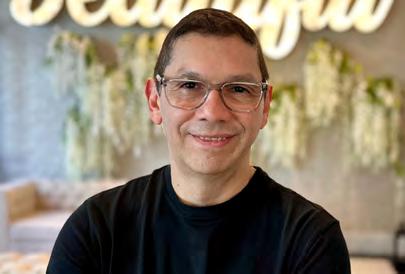
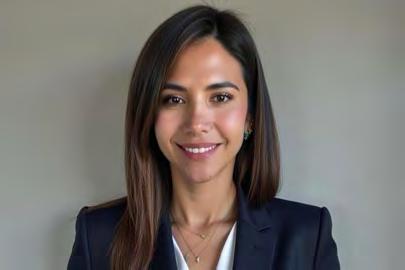
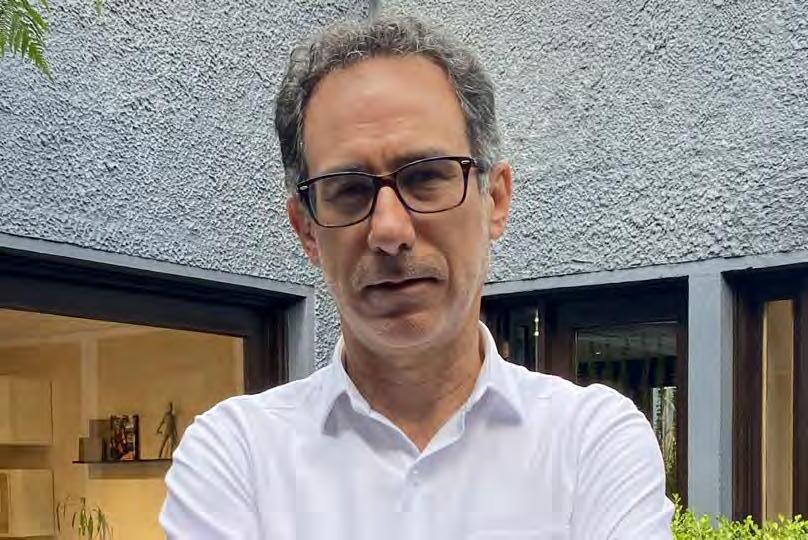


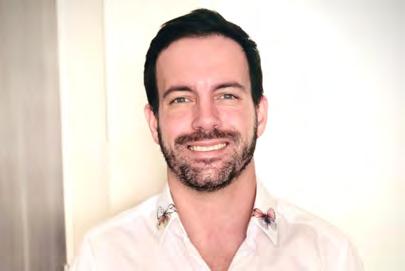

“The brands that act boldly will shape the future — and stand out at Cannes”
Héctor Bula
only economic or political, but deeply cultural. “Brands can’t stay neutral anymore. Cultural pressure is forcing them to engage in conversations that define our time — sustainability, diversity, mental health, social justice. We’ll see bold, culturally resonant, deeply human ideas,” he says.
Risk and emotion
Meanwhile, the tech and digital marketing landscape is also evolving. Camila Quintana, sales director LatAm at Locala, sees a clear shift toward purpose-driven strategies with measurable impact: “Marketers are looking for strategies grounded in real behaviours. Regional personalisation is now essential. Cannes will reward campaigns that blend emotion with precision and tangible outcomes.”
Alberto Grande, CRO at Exte, reinforces this with a more technical lens: “Brands are seeking privacy-conscious solutions that still deliver in highly regulated environments. We’ll see more technically sound creative campaigns that deliver impact without relying heavily on personal data.”
At the same time, Tanya De Poli and Checha Agost Carreño, co-founders of Founders, highlight a split in brand communication strategies: “Many big brands are avoiding strong positions, which opens the door for those willing to take risks. Hopefully, we’ll see work
that breaks the mould — campaigns that connect through emotion or disruption, especially from brands that haven’t yet had their moment on stage.”
Adding to that, Rafael García, chief marketing officer at Numatec, offers a more measured perspective: “So far, we haven’t seen major changes. Some brands are being a bit more cautious, but most annual plans remain in place.”
That’s something Aldo Quevedo, CEO and creative chairman at BeautifulBeast, strongly agrees with. In his view, creativity today is a form of resilience: “It’s more than inspiration. Creativity is a way to adapt, endure and lead in a complex world. The standout ideas will be those that are built to last — and that carry real meaning,” he says.
Closing the conversation, Agustín Cárdenas, executive vice-president of McCann Worldgroup Mexico, offers a pragmatic take: “We haven’t seen dramatic budget cuts yet, but brands are definitely more cautious. Our job as agencies is to remain strategic partners — no matter the economic climate.”
More than a passing trend, this moment is redefining the role of creativity in business. At Cannes Lions, excellence will still be celebrated. But so will the power of ideas to adapt, connect and generate real impact in a world that’s constantly shifting.
MONDAY, JUNE 16 -
WEDNESDAY, JUNE 18, 2025
Le SpeakEasy de Transmission 22 Rue Latour-Maubourg, 06400 Cannes, France
THE ONLY PLACE TO BE FOR B2B MARKETERS IN CANNES
The New Buyer Brain: Brand Storytelling, Behavioral Biases, and the Rise of AI-Led Insights
Le SpeakEasy de Transmission is the only multi-stream agenda packed with pure B2B insights at Cannes Lions. Pick and choose the sessions you want to attend in our three-day program across:
MONDAY
B2B buyer media consumption habits, brand’s growing importance, and exclusive screening of our brand storytelling film, Who Is Watson?
TUESDAY
How to make behavioral science your competitive advantage and why the Creator Economy is perfect for B2B.

WEDNESDAY
AI, LLMs, and the changing buyer journey – with special guest, will.i.am.
RSVP FOR SESSIONS AT THE ONLY 100% B2B PROGRAM IN CANNES
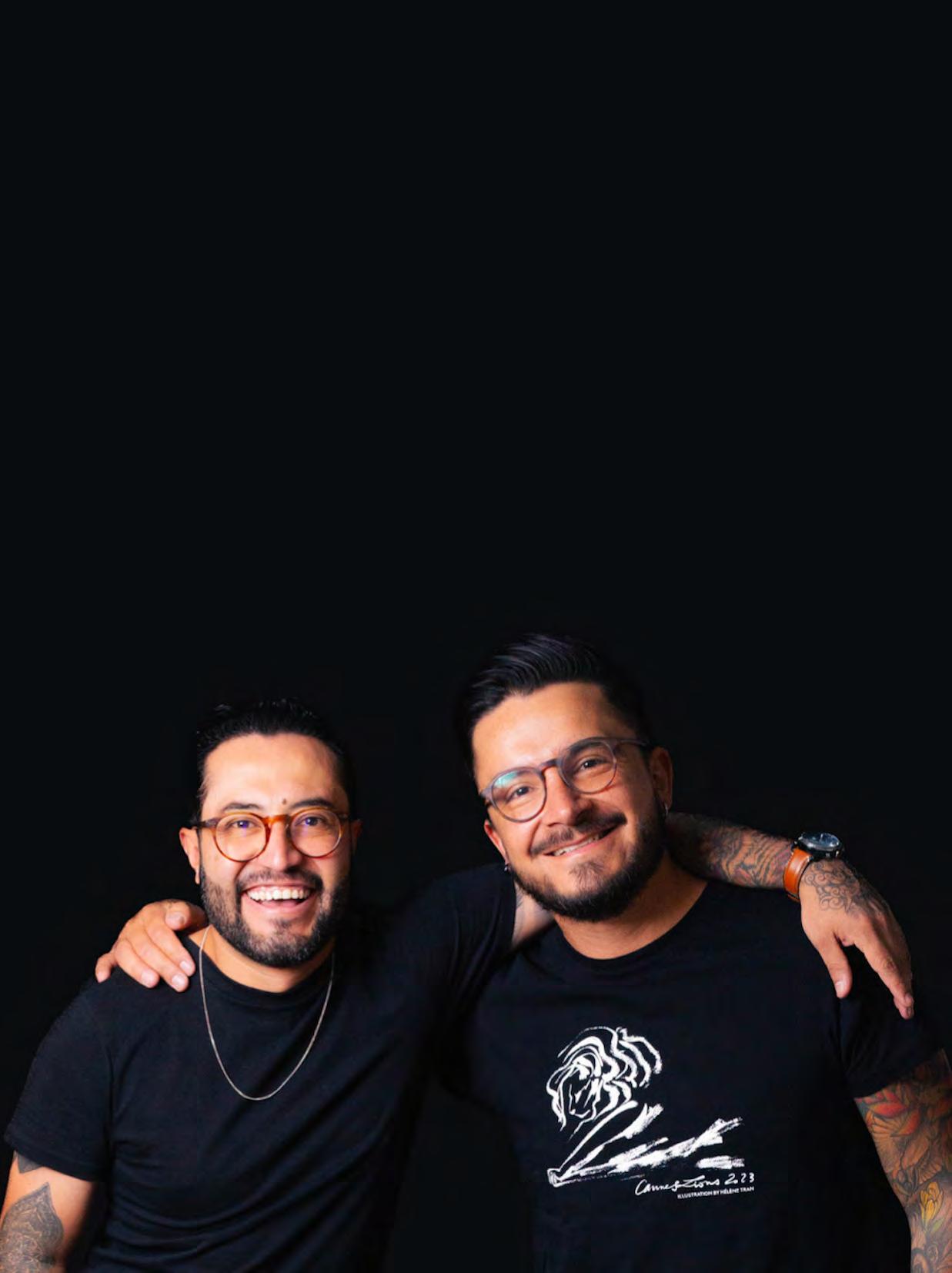
Creatively, Colombia has all the right ingredients, from raw talent to boundless energy, passion and drive. So why did the Colombian advertising industry take so long to realise its potential? It was all about self-belief, write José Sopó and Rodolfo Velásquez, co-founders and directors of COPU
FOR MANY years, Colombian advertising lived a paradox. The country had undeniable talent, a rich cultural heritage and an overflowing passion for creativity. Yet despite producing strong advertising, Colombia didn’t fully believe in its creative potential. On the global stage of the Cannes Lions Festival, our presence was sporadic — a Lion here, an honourable mention there. In the Spanish-speaking world, we watched as Argentina, Brazil and Spain collected trophies and praise. We celebrated our own wins with caution, as if unsure we truly deserved them.
But something shifted. Around 2010, as Colombian society began to evolve, a spark was lit. We started to believe in ourselves. We lifted our gaze and said: “This is for us too.”
Colombia stepped out of the shadows and on to the main stage. We moved from passive spectators to contenders. Beginning in that decade, we started collecting lions more regularly. Local agencies gained confidence, creative teams embraced bold, disruptive thinking and clients began to understand the value of taking risks.
This was the start of a deeper transformation — one that wasn’t only measured by awards but by a shift in mindset. We stopped looking outward for validation and turned inward to find our identity.
The cultural context helped. Around the same time, Colombia began telling a different story — a story that was more optimistic, more aligned with youth and more focused on local narratives. Meanwhile, our digital landscape was no longer lagging but catching up. We developed a sharper understanding of what the Cannes Lions celebrated. We learned the codes, embraced them and began crafting a distinctive style.
Today, 15 years after that inflection point, Colombian creativity is no longer an emerging promise — it’s a global reality. We win Lions frequently. We export ideas and talent. Colombian creatives lead international offices. And most importantly, they stay connected to Colombia, nurturing a creative ecosystem that grows stronger every day.
This progress hasn’t happened by chance. It’s the result of a complex mix: agencies committed to excellence, clients who embrace bold ideas, local festivals that raise the bar, international networks that see Colombia as a strategic hub and media outlets like COPU that amplify these efforts.
‘What matters most isn’t winning, but that our ideas are heard; that our voices and causes represent the Global South with dignity’
Most of all, it’s thanks to a generation of creatives who reject mediocrity and choose to make work that truly resonates.
The milestones are clear. Colombia’s first Lion came in 1995 but 2010 marked the real turning point. Since then, the country has won between 10 and 20 Lions a year. In the last 15 years alone, we’ve collected more than 180 lions — a once unimaginable feat. Alongside these wins, names have emerged as global creative references: Juan Carlos Ortiz, José Miguel Sokoloff, Francisco Samper, John Raúl Forero, Mauricio Rocha and Juan José Posada, among others. These are the creatives who stopped looking for inspiration outside and started creating from within. Agencies like Ogilvy, MullenLowe SSP3, Leo Burnett, Sancho BBDO, DDB, Grey, Young & Rubicam and McCann gained prominence both regionally and globally. Some even began executing global campaigns from Bogotá.
This momentum also led to a wave of talent moving abroad. More than 500 Colombian advertising professionals have left the country over the past decade, including Juan Isaza, Andrés Ordóñez, Carlos Andrés Rodriguez, Manuel Borde, Maria Alejandra Urbina, Diego Ortiz and Alexis Ospina. In the last three Cannes Lions alone, Colombians working internationally have contributed to more than 270 Lions. Today, having a Colombian on a global creative team is a mark of excellence. But this success also brings challenges. How do we sustain the growth of that talent in our country? How can we ensure our local industry remains fertile and supportive? Now, more than ever, Colombia must focus not only on exporting talent but also on retaining and empowering it at home. We now see Colombian work address-
ing universal themes from uniquely local perspectives — breaking moulds and even inspiring the markets we once admired. We’ve moved from spectators to participants, from admiration to conversation.
Colombian creativity remains vibrant. Agencies like VML, David, DDB, Ogilvy, Monks, Sancho BBDO and Publicis lead the way. Some have emerged from recent mergers; others have been evolving for decades. But all have managed to keep the momentum going, thanks to leaders like Xavier Serrano, Juan Pablo García, Fabio Quiroga, Julián Mercado, Andrés Carvajal and Olga Lucia Villegas. They’ve chosen to stay, carrying forward the legacy and ensuring that Colombia’s creative voice remains strong.
However, not everything is perfect. While the big networks still dominate recognition, the independents are starting to gain ground. Agencies like Buentipo have made strides — even winning Lions — but the movement is still small. We must ask why. Are entry costs too high? Is the model unappealing to independents? Is there a disconnect between their ideas and festivals’ creative language? These are questions we must explore if we want a truly diverse ecosystem.
Ultimately, the Cannes Lions is a reflection of all this — a symbolic medal. What matters most isn’t just winning, but knowing that we’re playing as equals. That our ideas are heard. That our voices and causes represent the Global South with dignity.
Colombia stopped looking sideways and started looking in the mirror. What we saw, we liked. We believed in ourselves. And we haven’t stopped writing new chapters since.
The future belongs to those who believe. And Colombia, without a doubt, already does.





Economic and political turmoil, the AI revolution and the resulting cut in budgets… the year since the last Cannes Lions hasn’t been great for the Turkish creative industry. But there is cause for optimism, according Erdem Akın Temel, digital content director, Kapital Media Group
CANNES Lions is a source of inspiration and knowledge. But it holds another function, which is often overlooked. While we are getting ready to meet colleagues at the Palais, we tend to review the last 360-something days, whether for professional reasons or personal ones. And the last 360-something days haven’t been the best for the Turkish creative industry. Turkey’s economy has been in free-fall for several years. In May 2024, the economy was in turmoil, with the annual inflation rate peaking at 75%. Fast forward one year inflation had eased, falling to around 38% in April 2025, according to Turkish Statistics Institute (TÜİK), but the strangling effects persisted. The Turkish Lira continued to depreciate and the corresponding exchange rate with the US$ rose to TRY38.83 from TRY32.59 between June 2024 and May 2025. While the government increased the minimum wage by 30% in January and the central bank maintained the interest rates between 45 and 50%, prices continued to rise. Moreover, another event took place: on March 19, 2025, Mayor of Istanbul Ekrem Imamoğlu, the main opposition’s presidential candidate and President Recep Tayyip Erdoğan’s main political rival, was detained with over 100 of his colleagues. In turn, massive protests arose in Istanbul and spread to the whole country. Then came the boycotts — started by students and supported by the opposition, against the brands and media outlets whose consumers and audience vastly differ from the institutions and the people that they support. This economic and political turmoil happened simultaneously with the AI revolution, leading
to marketing budgets being slashed. Brands turned to in-house productions to do more with less, some retreated from marketing efforts altogether. But even after this, Turkey’s creative industry showed its resilience and managed to rank 10th on WARC Effective 100, and 10th on WARC Media 100, in 2025. Amid this climate, a section of Turkey’s creative industries offered a beam of light. The last couple of years have been quite fruitful for the Turkish television industry, which started to become popular in the very first years of the millennium and ranked continuously within the top-five countries in terms of series export for approximately the last 10 years. According to The Economist, the global demand for Turkish shows grew by 184% between 2020 and 2023, compared to 73% percent for Korean dramas, and earned circa $600m in 2022. Today, Turkey is the third largest exporter of television, after the US and the UK. It is possible to attribute this continuous success of Turkish dramas because the package resonates with a global audience. Whether they are in a historic or a modern setting, they generally involve beautiful actors and actresses, hold a certain standard when it comes to aesthetics specifically through clothing and art direction, communicate a different set of values to its rivals and provide easy binge-watching opportunities with long episodes. Arab viewers are fond of Turkish series because they can relate to them culturally. Latin American and Spanish viewers follow them because they are used to watching telenovelas, which are quite close to Turkish ‘dizis’ when it comes to the expression of
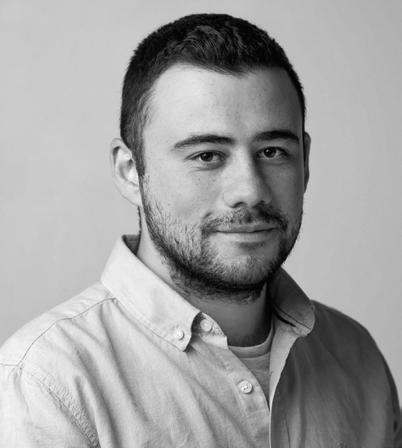
emotions. And the viewers that share a long history with the Ottoman Empire watch them to connect with their past.
Today, any conversation in relation to television productions or any kind of videographic content, must mention the role of platforms. While Turkish producers have been successful in creating dramas including Kara Para Aşk (Black Money Love), Yargı (Family Secrets) and Muhteşem Yüzyıl (Suleiman the Magnificient) that pull in global audiences, they lacked progress in other genres, such as comedy, putting Turkish productions at a disadvantage .
However, over the last couple of years, things have changed dramatically. First, the number of content creators and content produced for social-media platforms has increased dramatically. This led to a significant increase in the number of spaces for comedy. Then, albeit in a much smaller number compared to these two, the number of longer comedic content published on social-media platforms, including Instagram and TikTok, and digital video platforms, such as YouTube and Vimeo, started to soar. Finally, experiments in longer comedic content were noticed by media companies, which either tried to get those shows for their platforms or hire the talent who created them. Last year has been the year of comedy. Turkey’s TV and video content industry has reached a new level of diversity in terms of styles, stories and talent. Today, we can talk about a matured comedy scene that surpasses expectations and is full of creativity that feeds into social media, television and cinema.
In recent years, Cannes Lions has pioneered a return to humour in advertising, emphasising its importance for human connection. The global creative industry agrees that humour has to return to the scene, not only to create more enjoyable content but because of its impact on effectiveness. In Turkey, we’re already reaping the benefits of a vibrant comedy scene, but the question is whether these new shows will be able to carry this energy to other markets.

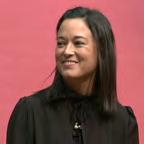

Argentina’s turbulent politics and economy give the country’s creative sector a unique and inspirational resilience. By Reporte Publicidad’s Majo Acosta and Marta González Muguruza of eporte Publicidad
‘Argentine creativity will test ideas that go beyond what is traditional’

WHEN Argentine talents join forces, incredible things happen. Argentina ranks seventh in the latest WARC global creativity report, and forms part of the “top 10 most awarded countries for creativity” according to the recent Creative 100 rankings. It’s the land of Messi, Colapinto and ‘The Eternaut’. The birthplace of one of the world’s best creativities — of talented people who are accustomed to dazzle even when playing within a restricted space, and to get things to happen, come what may. That’s because every 10 years the country ‘blows up’, the currency is devalued and you have to start afresh. The rules of the game in the country’s economy may change, but what doesn’t change is the resilience and thirst for glory. The urge to go Lion-hunting remains intact.
A brief look at the Argentine advertising map shows that annual investment in this area is close to $980m. Advertising activity represents barely 0.93% of the country’s GDP. Seven out of 10 agencies are independent, and they export creativity and services worth $200m a year. After a period of expansion, during which the most highly regarded local indies opened offices in Latin America, the opposite is now taking place. Some principal local independent agencies have been acquired by foreign capital, hungry for innovative and culturally relevant talent. Most recently, Don, an agency founded two decades ago by Papón Ricciarelli, was acquired by the French Havas group. Last year, Niña, founded by Gonzalo Vecino, Pablo Álvarez Travieso and Pablo Panigatti, was acquired by Tombras, the global independent agency with headquarters in Knoxville, Tennessee, and, in January this year, OvareGroup bought the indie Togetherwith, led by Santiago Puiggari and Lulo Calió, following a successful two-year association with the Argentine office.
At Cannes Lions last year, Gut, the Buenos Aires-based network of Gastón Bigio and Anselmo Ramos, with seven offices in the Americas, Europe and Asia, was acquired to great fanfare by Globant, giving birth to Globant Gut, an industry hybrid combining technological and communicational skills.
“Today, Argentina is ready to capitalise on its talent and creativity in the global arena. The accelerated
adoption of artificial intelligence, the consolidation of the economy of the creators and the fragmentation of the media demand a constant reinvention of our agencies,” says Gonzalo Vecino, president of Agencias Argentinas, the institution that represents the sector’s principal agencies. “This context spurs us to export services, to form strategic alliances and to bring in new technologies, positioning our country as a hub for innovation and creativity in the region.”
According to Vecino, far from being unfavourable, the constant changes, uncertainty and fluctuating markets actually turn out to be something that Argentina is accustomed to navigating. “Its diversity and capacity for reinvention is ready for a starring role in the new era of global communication,” he says.
The new president of the Circle of Argentine Creativity, and first woman to hold the post, Anita Ríos, agrees: “Argentina, beyond the multiple crises it undergoes, continues to be a spectacular locus of creativity. And not only in advertising. Creativity is expanding enormously and all those other facets are ones which we are applying in our day-to-day work. Creative industries are changing, and we ad people cannot fall behind.”
One of Argentina’s most outstanding phenomena of recent times has been the global blockbuster series ‘The Eternaut’, based on the science fiction comic strip created by Héctor Germán Oesterheld and Francisco Solano López. It tells the story of an extraterrestrial invasion of Buenos Aires, in which the character Juan Salvo and a group of survivors fight the invaders while the city is blanketed by a deadly snowfall. The strip, which is almost 70 years old, is regarded as a political allegory about collective resistance to oppression. Its adaptation as a six-chapter series became one of Netflix’s biggest worldwide hits. Produced by K&S and directed by the talented Bruno Stagnaro, it features the country’s biggest star, Ricardo Darín. It led Netflix’s weekly worldwide ranking for non-English languages, with 10.8 million watches around the globe, and was a top-10 series in 87 countries. It was Rotten Tomatoes’ favourite in the week of its launch.
‘The Eternaut’ was a two-year creative process, involving almost 3,000
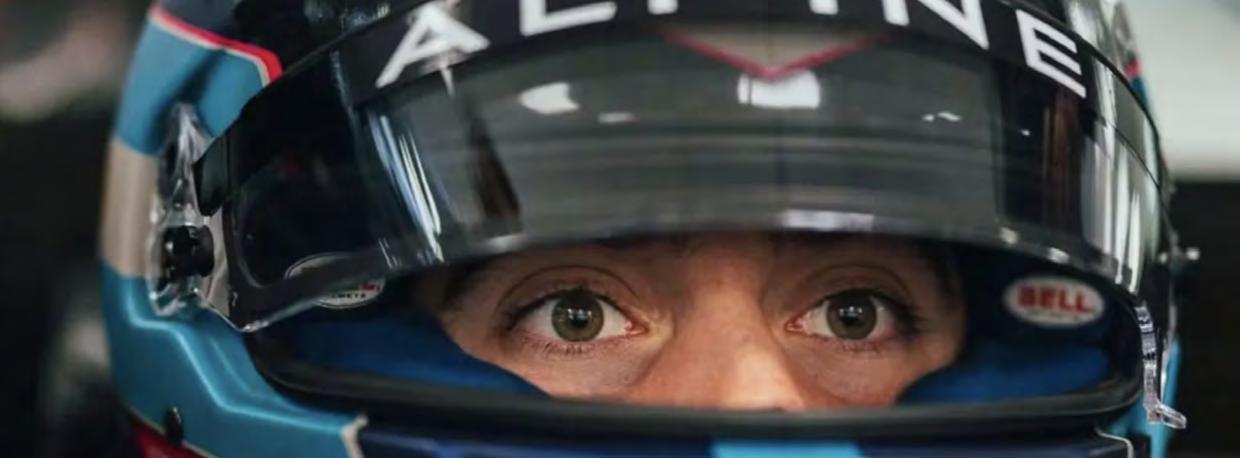
people, 50 locations, 30 virtual settings and eight months of shooting, demonstrating Argentine production to be on a par with any Hollywood project. The series contributed more than $33m to the Argentine economy, equivalent to 1.5% of the total contribution of the cultural industry to Argentina’s GDP so far in 2025. Brands also starred in the series. Over 40 local and international brands formed part of the scenery — banks, insurance companies, fastfood eateries, foodstuffs. They were kept in their real locations after the production decided to neither erase them nor invent fictitious brands.
The real-life advertising posters and POS formed part of the constructed plot and narrative, endowing outdoor advertising with great value as a narrative support. And they didn’t go unnoticed: a study by the Havas group revealed that more than 80 brands were spontaneously recalled by the audience. It found that: “‘The Eternaut’ not only generated visibility for the brands, it also awarded them a spot in collective memory. The series resignified the urban space: real streets, stores and billboards inserted themselves naturally into the narrative, heightening the realism and the brands’ visibility.”
Meanwhile, Argentine national icons such as the ‘truco’ (trick) card game, the mate (mah-TEH) drink and artists like Mercedes Sosa, Gilda and Soda Stereo cut across borders, carrying Argentina’s culture around the world.
Beyond the 30-second slot
In this edition of the festival, Argentine creativity will test ideas that go beyond what is traditional. The YPF
oil company and Adidas, together with Mercado McCann, launched the hilarious and unique ‘Manual for First-Time Soccer Users’, in which Leo Messi, Rodrigo De Paul and Lionel Scaloni go through the main tricks that every soccer player should put into practice.
The Quilmes beer brewery, along with its in-house draftLine, dressed up the country’s principal stadiums with “historical murals” spotlighting the clubs’ history, their fans and beer — a clever way of working around the ban on communicating alcohol. AI and creativity, combined, have been yielding great results, like the campaign to promote a new wine from the Bodega Dante Robino winery, by the TombrasNiña agency. The label celebrates women astronomers through history, with the help of artificial intelligence to reconstruct their portraits. The first edition was dedicated to Amélie LeFrançais de La Lande, a mathematician and astronomer who catalogued 10,000 stars.
NotCo, a foodtech plant-based products company, has partnered with The Juju creative agency (Untold ecosystem) for ‘The NotCow’, a decoy cow filled with NotBurgers, to protect livestock in Hidalgo, Mexico, from alien abductions. The campaign was the first project undertaken under their One Single Office work model between Argentina and Mexico.
The leader in e-commerce in LatAm, Mercado Libre, along with Gut, will compete with ‘Boxed Ads’. Instead of buying traditional billboard space, Mercado Libre bought the borders: the physical structures around other ads. They placed their iconic box on these edges, suggesting they had just delivered the product featured

in the main ad. It earned attention, sparked social media buzz, and allowed media partners to monetise unclaimed real estate.
Another of this year’s outstanding ideas is ‘A Tale that Brings Relief’ by Grey alongside Vick VapoRub (the international brand Vicks is known as Vick in Argentina). They created a bedtime storybook suffused with Vick’s scent. The book, co-written with popular children’s authors, helps children breathe better and feel less anxious while sick. As kids read and smell the story, the treatment becomes a fun, calming ritual. ‘Sex Can Reignite the Economy’ by Tulipán and Zurda Agency. Under the premise that sex boosts consumption and activates multiple sectors of the economy, the condoms brand launched an extensive discount and co-branding platform for Spring Day (a date similar to St Valentine’s Day in Argentina). From clothing to cuisine and transportation, everything revolves around desire and dates. Tulipán used this idea to promote its products and celebrate the occasion.
Great storytelling was featured in ‘Argentine Stories’, Publicis’ idea for Renault — an audio-visual journey through the windows of Renault’s different models, filmed at more than 10 locations, chosen for their geographic diversity and their symbolic importance in representing a territory as vast as Argentina’s.
‘Argentina, beyond the multiple crises it undergoes, continues to be a spectacular locus of creativity’
Anita
Ríos
Eight out of 10 women receive hateful comments on their social media posts. This impacts on their mental health and self-esteem, so that they often end up deleting their photos. VML Argentina and Dove created ‘(Un) Deleted’, the first exhibition consisting of photos deleted because of hate experienced. They invited women victims of hate to show their

deleted photos in a photo exhibition. Another of the powerful ideas from this same agency that will be in competition is ‘Health Tracker’ from VML, Elea and NGOs. Migrant women on the Argentina-BoliviaParaguay borders lack continuous prenatal care, increasing risk of diseases like Chagas. ‘Health Tracker’ is a cross-border platform that stores and shares medical data securely. It predicts risks based on pregnancy stage, migration and local diseases. A local solution with global scalability for mobile, underserved populations.
Movistar’s proposal, under its ‘Secure Connection’ slogan, presents ‘Game Guardian’, a fakes detector to avoid grooming and generate a safe environment for children online. Lastly, seven out of 10 people responsible for domestic work are cis women; to illustrate how care tasks impact on professional growth, Vendaval and ZonaJobs invited a professional runner to participate in the Buenos Aires marathon while being interrupted and made to carry out tasks during the race. Each delay gave an advantage to other, less-qualified runners.
The Colapinto factor Formula 1 is undergoing a worldwide repositioning process, adding new audiences thanks to the success of ‘Drive to Survive’ and a cohort of youthful drivers. After two decades Argentina has a leading F1 driver in 21-year-old Franco Colapinto who debuted with a surprising 12th place in Monza, representing the Williams team last year. His arrival doubled F1 audiences in the country and became a magnet for brands. He is currently running for the Alpine team, for which he returned to the tracks in Imola last month. His media impact has been amazing: he is starring in ads for e-commerce, painkillers and, naturally, carmakers. Local brands like Quilmes, Mercado Libre, Globant and Renault sponsor him. On the networks, he commands millions of followers and generated more than 100,000 new such followers for Alpine over just one weekend. No one wants to be left behind. While Franco tests himself at the F1 Canadian Grand Prix, Argentina will be running its own race at the Palais des Festivals. Bonne chance pour nous!
Screening Schedule Screen 1
Film Lions Entries and Shortlist
Monday 16 June
09:00-19:00 Films Lions Entries
Tuesday 17 June
09:00-19:00 Film Lions Shortlist
Wednesday 18 June
09:00-19:00 Film Lions Shortlist
Thursday 19 June
09:00-19:00 Film Lions Shortlist
Friday 20 June
09:00-19:00 Film Lions Shortlist
Screening Schedule Screen 3
Entertainment Track Shortlists and Winners
Monday 16 June
09:00-14:30 Entertainment Lions for Sport Shortlist
Film Craft Shortlist and Winners Screening Schedule Screen 2
Monday 16 June
09:00-19:00 Film Craft Lions Shortlist
14:30-19:00 Entertainment Lions for Gaming Winners 14:30-19:00 Entertainment Lions for Gaming Winners (F01 Local Brand, F02 Challenger Brand, F03 Single-market Campaign)
Tuesday 17 June
09:00-14:30 Entertainment Lions for Sport Shortlist
14:30-19:00 Entertainment Lions for Gaming Shortlist 14:30-19:00 Entertainment Lions for Gaming Shortlist
Tuesday 17 June
09:00-19:00 Film Craft Lions Shortlist
Wednesday 18 June
09:00-19:00 Film Craft Lions Winners
Thursday 19 June
09:00-19:00 Film Craft Lions Winners
Friday 20 June
09:00-19:00 Film Craft Lions Winners
Wednesday 18 June
09:00-14:30 Entertainment Lions for Sport Winners
Thursday 19 June
09:00-14:30 Entertainment Lions for Sport Winners
Friday 20 June
09:00-19:00 Entertainment Track Winners
To find out when your work is screening come and talk to us at the Awards Hub desk.



